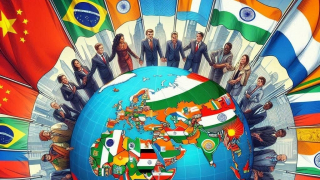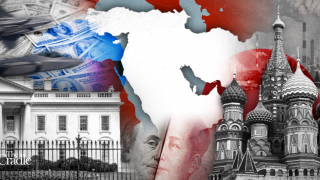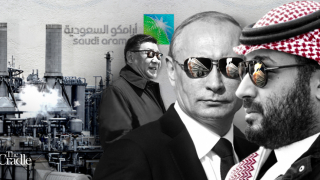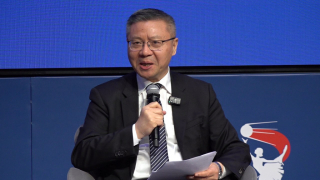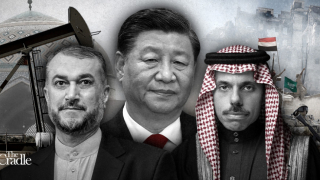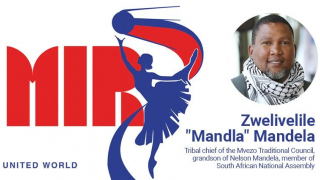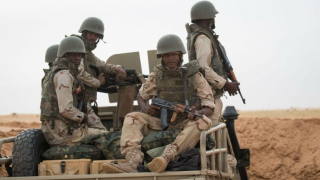Oops, the Global South Just Flipped the Board.
As of April 2025, BRICS — once a modest economic club of emerging powers — has emerged as the center of gravity in a rapidly shifting global order. No longer just Brazil, Russia, India, China, and South Africa, the BRICS bloc has expanded under the BRICS+ framework, now including pivotal states like Iran, Saudi Arabia, Egypt, the UAE, Indonesia, and Ethiopia. This is not just geopolitical arithmetic. This is the architecture of a new civilizational world.
Beyond GDP: The Soul of Multipolarity
The intellectual bedrock of this transformation lies in Alexander Dugin’s vision of multipolarity, masterfully summarized and expanded in Constantin von Hoffmeister’s new book, MULTIPOLARITY! Drawing on thinkers like Heidegger, Alain de Benoist, and Guillaume Faye, von Hoffmeister presents BRICS not merely as a financial pact but as a cultural and spiritual rebellion against the homogenizing forces of liberal modernity.
For instance, Dugin’s concept of “Noomachia” (the battle of minds) emphasizes the importance of cultural and spiritual diversity in resisting global homogenization. This idea is echoed in von Hoffmeister’s analysis of BRICS as a platform for cultural renaissance.
Veteran journalist Pepe Escobar has long documented the tectonic shifts from Atlanticist dominance to Eurasian awakening. He calls BRICS "the spearhead of de-dollarization" and the heart of the New Silk Road — a network of interlinked sovereignties rejecting Washington’s “rules-based order.” Escobar highlights projects like the China-Pakistan Economic Corridor (CPEC) and the Eurasian Economic Union (EAEU) as tangible examples of this shift.
Similarly, Jeffrey Sachs, once an economic reformer for the IMF, has turned into a fierce critic of U.S. global overreach. He now argues that BRICS offers the only viable platform for peaceful multilateral cooperation, calling it “the embryonic UN that the actual UN failed to become.” Sachs points to initiatives like the BRICS New Development Bank (NDB), which funds infrastructure and sustainable development projects in member countries, as a testament to this new cooperative spirit.
However, BRICS countries face significant internal economic challenges that could hinder their ability to lead a multipolar world. For example, Brazil and South Africa have struggled with economic stagnation and political instability. Additionally, the diverse political systems and ideologies within BRICS can lead to conflicts and hinder cohesive decision-making. China's authoritarian model contrasts sharply with India's democratic system, creating potential friction.
From Esoteric Trumpism to Civilizational Realism
Strangely enough, even Donald Trump features heavily in this story. Dugin himself, in the foreword to von Hoffmeister’s book, references his own “Trumpo-Futurism” — a gesture not only toward American populism but also toward Nick Land’s accelerationism, where the Internet becomes the battlefield, shifting power from Washington to new poles like Beijing, Moscow, and Tehran.
As Constantin notes, technology no longer serves liberalism but may, in fact, be its undoing. The rise of sovereign internets, AI nationalism, and crypto economies aligns with BRICS's push to escape the financial and informational dominance of the West. For example, China’s Great Firewall and Russia’s Sovereign Internet Law are efforts to create independent digital ecosystems.
Despite these efforts, BRICS countries still rely heavily on Western technology and innovation. Efforts to develop independent technological ecosystems face significant hurdles and may not be sufficient to break away from Western dominance.
Cultural Borders, Not Just Political Ones
One of the most striking chapters in MULTIPOLARITY! deals with ethnopluralism — the idea that cultural integrity is worth preserving without resorting to chauvinism or supremacism. Von Hoffmeister walks a tightrope between de Benoist’s cultural separationism and Martin Sellner’s remigrationist realism, arguing that multipolarity demands distinct spaces — not melting pots, but mosaics.
Islam, in this model, is not demonized; it is respected as a civilizational power. The problem arises when liberal universalism attempts to dissolve both Christianity and Islam into a consumerist soup of global sameness. True multipolarity resists this by reaffirming rootedness — whether in Tehran, Moscow, or Delhi.
Indian scholar Sreeram Chaulia echoes this when he argues that BRICS represents "strategic autonomy for the non-Western world." He positions India’s role in BRICS not just in economic terms but as a civilizational assertion — alongside China’s Confucian model, Russia’s Eurasian tradition, and Iran’s Islamic republicanism. Chaulia cites India’s International Solar Alliance (ISA) as an example of how BRICS countries can lead in global initiatives while maintaining their cultural identities.
However, the idea of ethnopluralism and preserving cultural integrity can lead to tensions and conflicts within and between BRICS countries. Balancing cultural preservation with economic and political cooperation is a complex challenge.
Dugin’s Warning: The Iran Question
Dugin goes a step further. He proposes a Union State between Russia and Iran, modeled after the Russia-Belarus alliance. With the U.S. drifting toward a potential military confrontation with Iran — partly driven by pro-Israel lobbies and neocon holdovers — such a civilizational alliance might be the only path to peace.
Unlike Iraq or Afghanistan, Iran is consolidated, sovereign, and spiritually intact. A war would be catastrophic for all parties. Only a deeper Eurasian integration can hold back the tide.
The Shanghai Cooperation Organization (SCO), which includes both Russia and Iran, is an example of such integration efforts.
The Fall of the West and the Rise of the Rest
Von Hoffmeister echoes Dugin’s disdain for Western liberalism, which he provocatively calls “white supremacism in liberal drag.” From Kipling’s White Man’s Burden to gender ideology, the West’s insistence on universal “values” becomes a vehicle for erasing cultural uniqueness.
Even America, the former hegemon, is now a civilization in crisis — plagued by racial conflict, industrial decline, birthrate collapse, and nihilistic youth. The 1990s nostalgia seen in pop culture and politics is not just aesthetics — it is mourning.
But as Dugin writes, America can still reinvent itself — as a regional power, not a global empire. This is the essence of multipolarity: not the destruction of the West, but its de-imperialization.
Chinese diplomat and scholar He Yafei reinforces this point from Beijing’s side, writing that Global South cooperation is no longer aspirational — it's inevitable. His essays champion “mutually respectful development” rather than Western-style “civilizing missions.” He Yafei points to the Belt and Road Initiative (BRI) as a model for such cooperation.
Archeofuturism and the Way Forward
In the final chapters, von Hoffmeister blends Dugin’s metaphysics with Guillaume Faye’s Archeofuturism — the idea that we must revive ancient spiritual energies while embracing select modern tools. Heidegger’s critique of technology, Evola’s warrior spirit, and Carl Schmitt’s theory of land vs sea powers are all called into action.
Economist Samir Amin, in his now-classic works, offered the economic foundation for all of this — urging the “delinking” of the Global South from Western-dominated financial systems. BRICS, in this light, becomes not just political resistance, but economic liberation. Amin’s concept of “self-reliance” is exemplified by BRICS countries developing their own financial systems and trade networks.
The message is clear: BRICS must not become another globalist club. It must be the platform through which civilizations revive their roots, restore their gods, and resist the dystopia of algorithmic equality.
However, rapid industrialization and economic growth in BRICS countries have led to significant environmental degradation. Addressing these issues while maintaining growth is a major challenge. Additionally, BRICS countries face high levels of social inequality, which can lead to internal unrest and hinder their ability to present a unified front on the global stage.
Conclusion: A Bloc of the Future — and the Past
BRICS and its allies are not merely building an alternative to the West. They are constructing a new sacred geography where sovereignty, identity, and culture are not flattened but lifted. Whether through financial systems outside the dollar, digital sovereignty, or strategic alliances like a Russia-Iran Union State, the future is not post-political. It is post-liberal.
As Dugin, von Hoffmeister, Escobar, Sachs, Amin, and others all show in different ways, the global struggle is no longer between Left and Right. It is between monoculture and multipolarity, between techno-liberalism and tradition, and between empire and civilization.
BRICS is the frontline.


